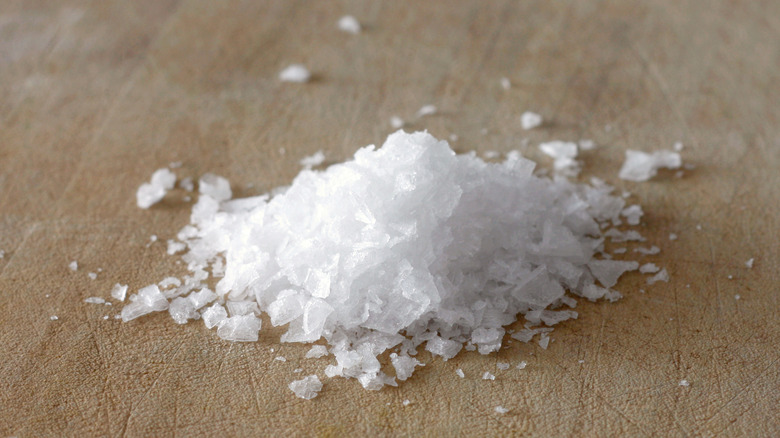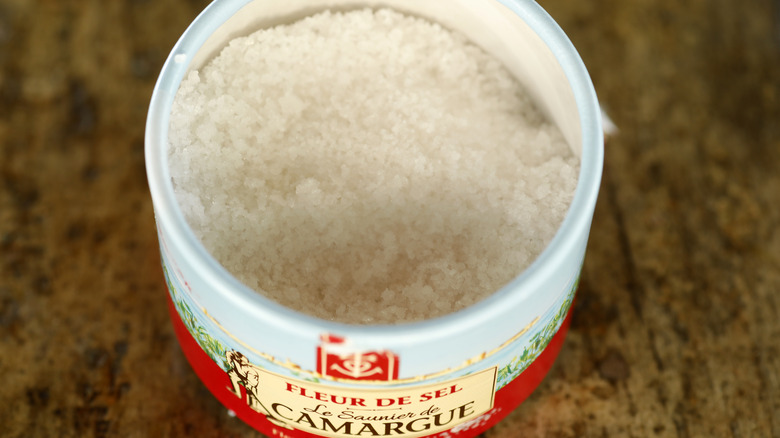Is There A Difference Between Sea Salt And Fleur De Sel?
We tend not to think too much about salt, but it's a critical part of many dishes. After all, the ingredient can be found just about everywhere from our kitchens to the dining tables of the best restaurants in the world. And while salt generally does its job by making our cooking taste better, different types of salt enhance our cooking in different ways — this is especially true of sea salt and fleur de sel.
While most of the salt we consume as table salt is taken from underground salt mines, sea salt is as its name suggests (via Mayo Clinic). It is harvested from the sea by collecting water, evaporating that, sifting it, and then processing and packaging what is left behind. Sea salt ranges in texture from coarse crystals to fine flakes and their flavors depend largely on the areas from where they are taken from, according to The Spruce Eats.
Fleur de sel is no ordinary sea salt
While fleur de sel is a sea salt, not all sea salts are fleur de sel, which comes from just one particular place. This specialty salt, whose name is translated as "flower of salt" comes from Brittany, France, and is harvested in a special way. As noted chef David Lebovitz points out, "even to this day, all the salt (fleur de sel) is hand-harvested in the Guérande and the only mechanical part of the process is the truck which drives the salt to the packaging facility close-by."
Lebovitz and other chefs of his ilk call fleur de sel a "finishing salt", which is not cooked with but sprinkled over dishes from salads to main courses and desserts. It can even be used to add a salty finish to sweets like chocolates — but fleur de salt needs to be added at the very end, so that it doesn't melt into the food. A pinch is said to be enough to elevate the best cooking from the simply yummy to the sublime.

